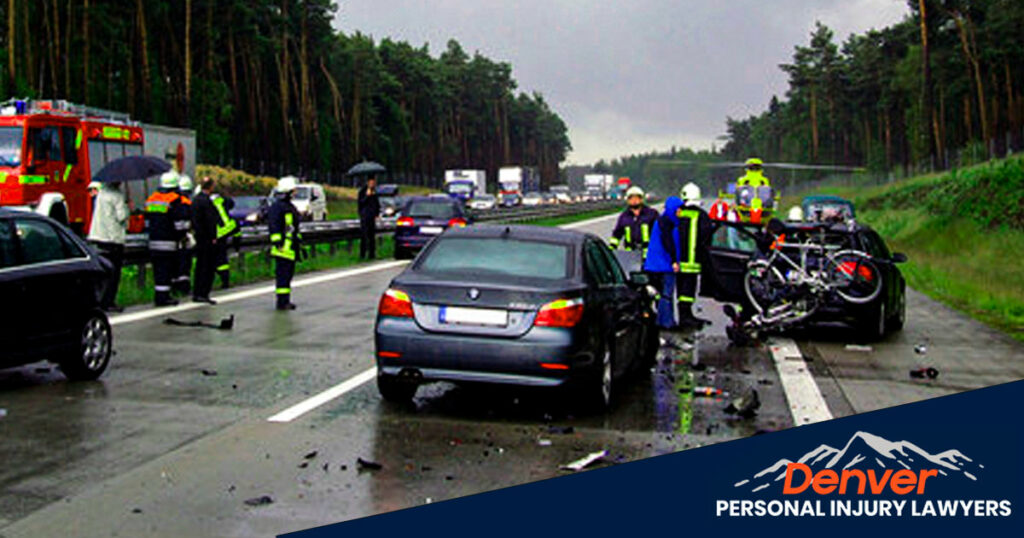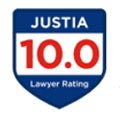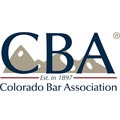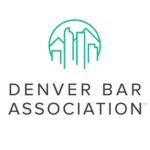You might be eligible to recover compensation if you sustained injuries in a Denver car accident. However, you will first need to establish liability and show why the other driver is legally responsible for your injuries.
To prove fault or negligence, you need evidence. For example, imagine the other driver ran a stop sign and crashed into you. That would be relatively easy to prove with traffic cam video footage or an independent witness. But, unfortunately, not all accidents are that straightforward or simple to prove.
Who is at fault for a lane-changing accident? And how can you prove they are at fault? Lane-changing accidents usually take place at high speeds, and are therefore challenging to identify who is responsible for the accident. Furthermore, if you’re partially responsible for causing the collision, it will impact the compensation you can recover.
Table of Contents
ToggleWho Is Responsible for a Merging Accident?
For almost all car accidents, negligence is the key factor in determining fault. This principle applies to lane-changing accidents as well. All drivers on the road have a duty to drive safely and use reasonable caution to prevent harming other drivers. Failing to do so is considered negligence.
So let’s say a driver is attempting to merge into traffic. They are responsible for checking their mirrors, blind spots, and surrounding areas to ensure they can safely move to a new lane. Failing to adequately check their surrounding areas before merging can lead to a collision. As such, the merging driver is often at fault for a merging accident, but not always.
A merging driver might be found negligent if they caused the accident by:
- Not checking their side-view and rear-view mirrors before merging into a new lane of traffic
- Not checking blind spots before merging
- Not matching the speed of surrounding vehicles before switching to a new lane
- Failing to use turn signals
- Other distractions while driving, such as texting using the phone while merging
Failure to follow traffic laws and use precautions before merging could be interpreted as a driver breaching their duty of care. That is, they failed in their responsibility to prevent harming other drivers on the road. As a result, they could be found legally responsible for the accident and any resulting injuries. That said, You will need strong evidence to support your claim.
Who Is at Fault for a Denver Sideswipe Accident?
Sideswipe accidents occur when two vehicles traveling in the same direction make contact by “swiping.” Determining liability for a sideswipe accident is difficult. That’s because both cars are moving, usually at high speeds, with little time for drivers to react.
But, one driver is usually responsible for a sideswipe accident. Examining evidence is crucial to determine if the driver was negligent and caused the accident. Here are some clues that can indicate a driver was negligent and caused a sideswipe accident:
- Switching lanes without checking surroundings through mirrors
- Changing lanes before checking blind spots
- Changing lanes without matching the speed of surrounding traffic
- Cutting off another driver while switching lanes
- Switching lanes while distracted
A driver who fails to take proper precautions before switching lanes and causes a sideswipe is usually responsible.
Is the Driver Who Changed Lanes Always at Fault in a Denver Car Accident?
Usually, the driver who switched lanes is at fault for a lane change or sideswipe accident. However, that’s not the case 100% of the time. Sometimes, it’s possible the other driver was partially or fully responsible.
Here are some examples of when the other driver (who did not switch lanes) could be at fault:
- If a driver speeds up to prevent the other driver from merging
- Slowing down to block the driver from entering the lane
- Following the front car too closely to prevent a car from merging into the lane
- Failing to adjust speed to allow a merging car to safely enter the lane even after the other driver has used their turn signal to switch lanes
How Do You Determine Liability for a Lane-Change Accident?
The two drivers involved in a lane-changing accident likely have different accounts of events. That’s why additional evidence will be necessary to determine liability.
The following types of evidence can help determine liability for a lane change accident:
- A police accident report
- Pictures of the accident scene
- Video surveillance or traffic cam footage of the accident
- Medical records
- Eyewitness testimonies
- Accident reconstruction reports involving forensic evidence
- Statements from all parties involved
In Colorado, you can still recover damages even if you are partially responsible for the collision. You can seek compensation for any accident-related damages if you are less than 50% responsible for causing the accident. However, if you are partially at fault, your compensation amount will be reduced by the amount of fault you contributed. So if you were 20% at fault for the accident, your compensation would be reduced by 20%.
How a Denver Car Accident Lawyer Can Help You
Working with an experienced lawyer is the best way to secure maximum compensation after a lane-switching accident in Colorado. With the help of an experienced Dever car accident attorney, you can recover for the following accident damages:
- Medical bills
- Pain and suffering
- Missed work resulting in lost income
- Property damage
- And more
We can help you get the money you need to cover the expenses necessary to get your life back in order. We will give you the space and time to recover from injuries while we handle your case. Most importantly, we will gather evidence to help establish liability and hold all liable parties accountable.
Negotiating with insurance companies can be an uphill battle without strong legal representation. However, we know how to get you a full and fair settlement. If the insurance companies don’t want to cooperate, we can prepare your case for trial. The bottom line is we will do whatever it takes to get you a successful outcome.
Contact us today for a free initial consultation.
















